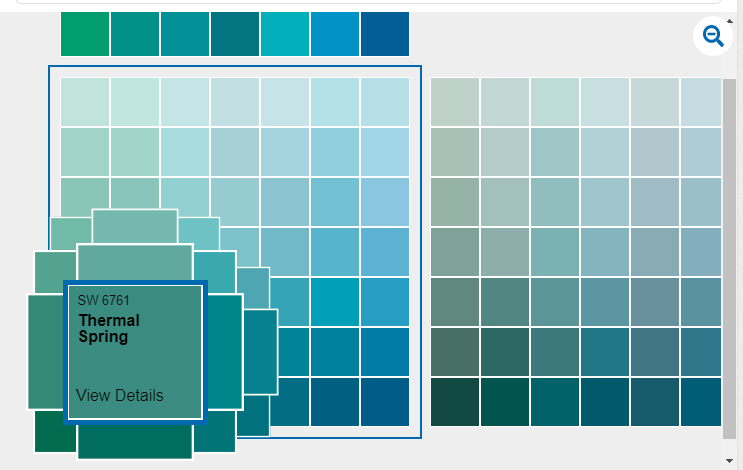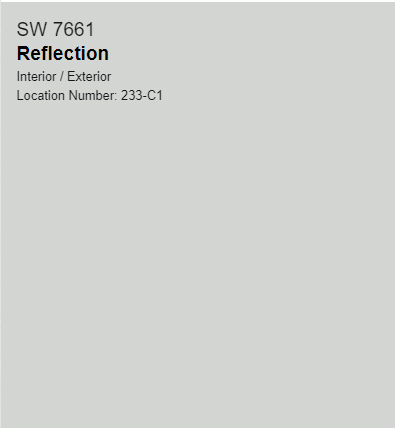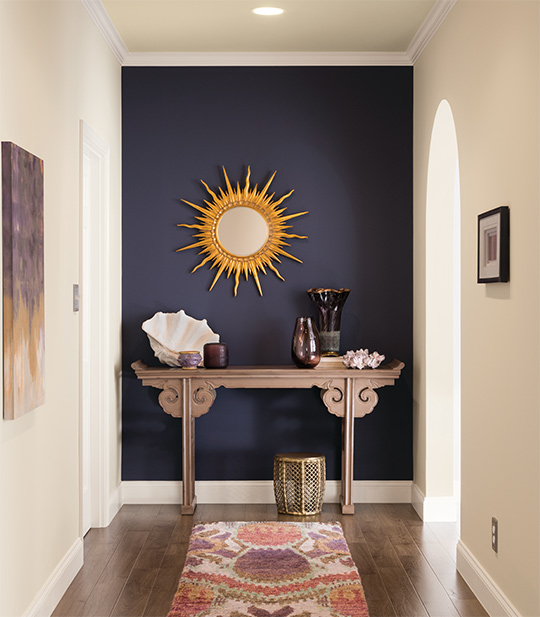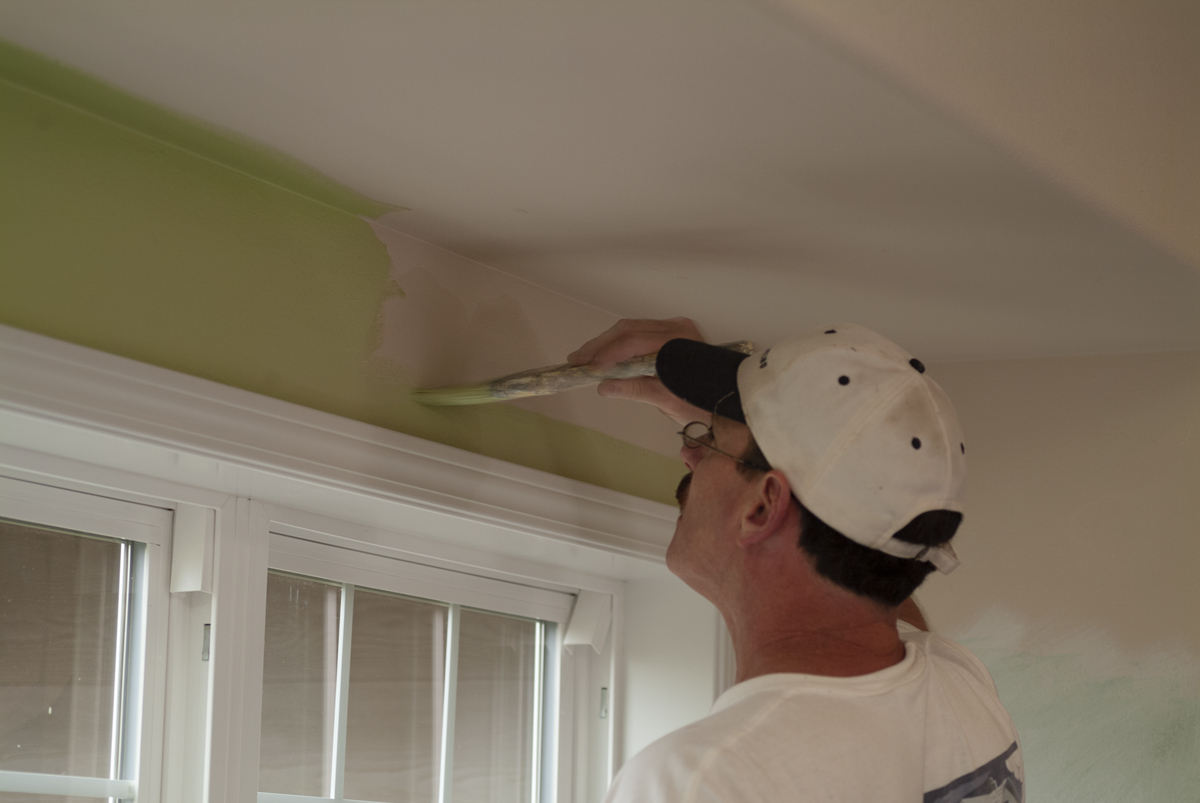According to Sherwin-Williams, blue is “by far the most popular color family, blue paint is traditional and conservative in its darker tones and becomes breezy and cool when you add white. Blue colors are known to have calming effects when lighter versions are used so it is perfect for a space where you want to retreat and relax. Blue can also be energetic when bright tones are used and contrasted with white or yellow. Blue paint used alone is usually not the best color for a kitchen but in any other space you can make it work.”



These interactive color graphs at Sherwin-Williams.com can help you choose your colors. On the first grid select a color then click “View Details” to see more including suggested complimentary colors.


































